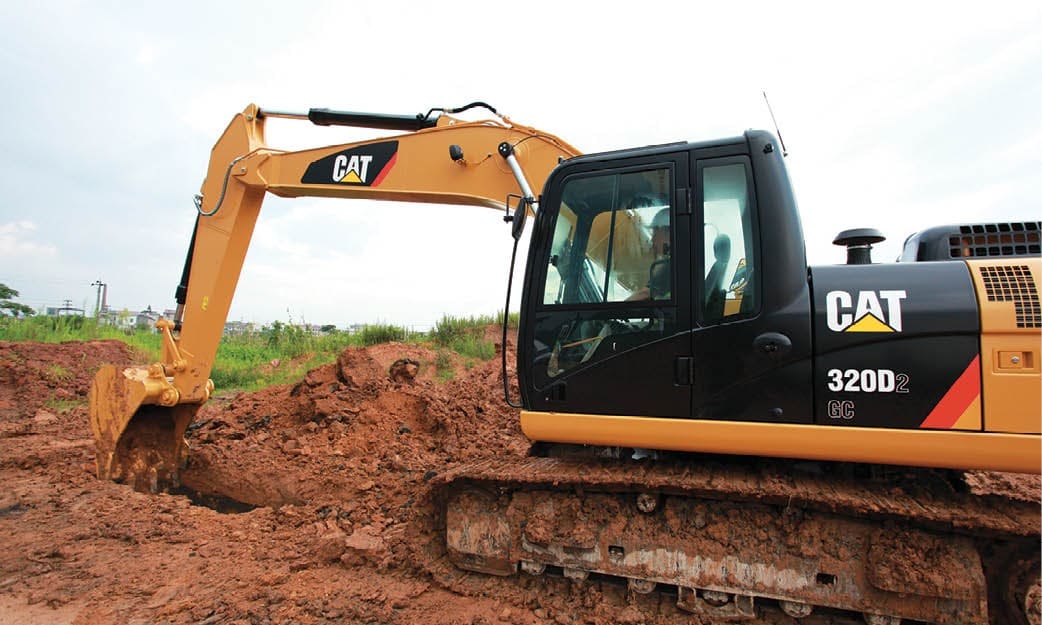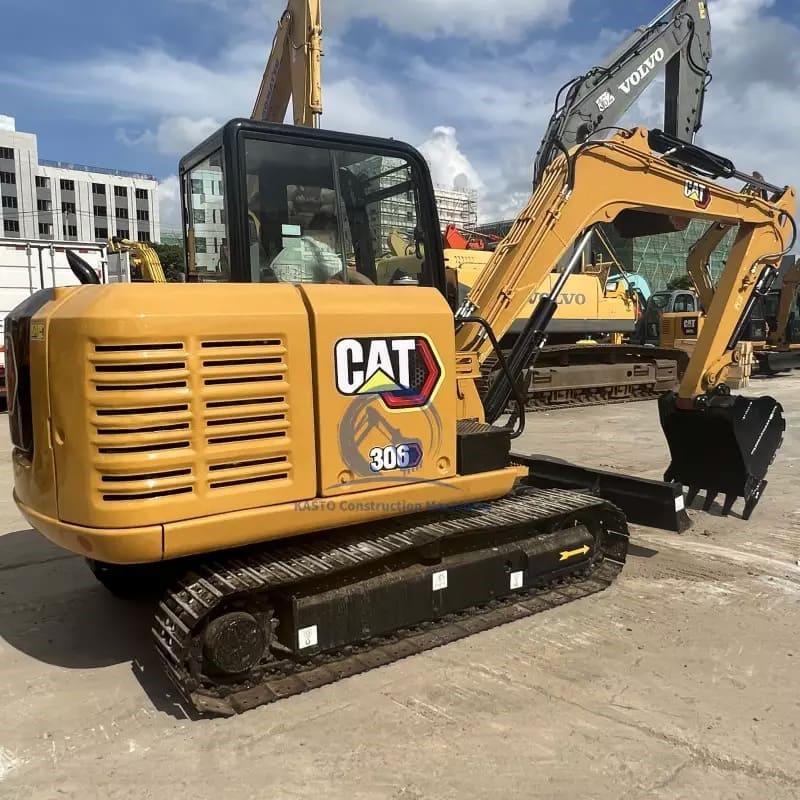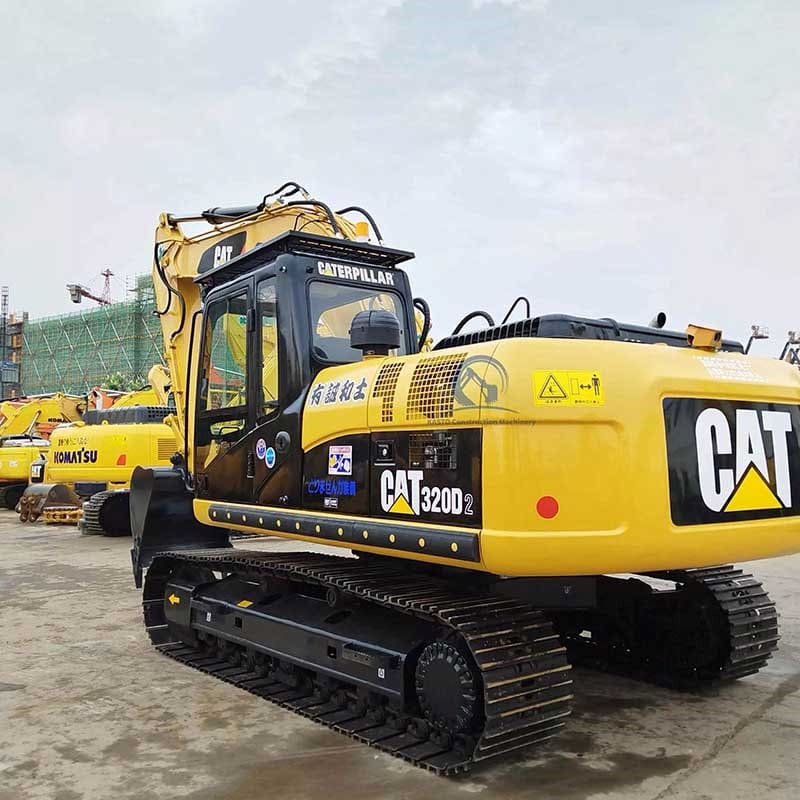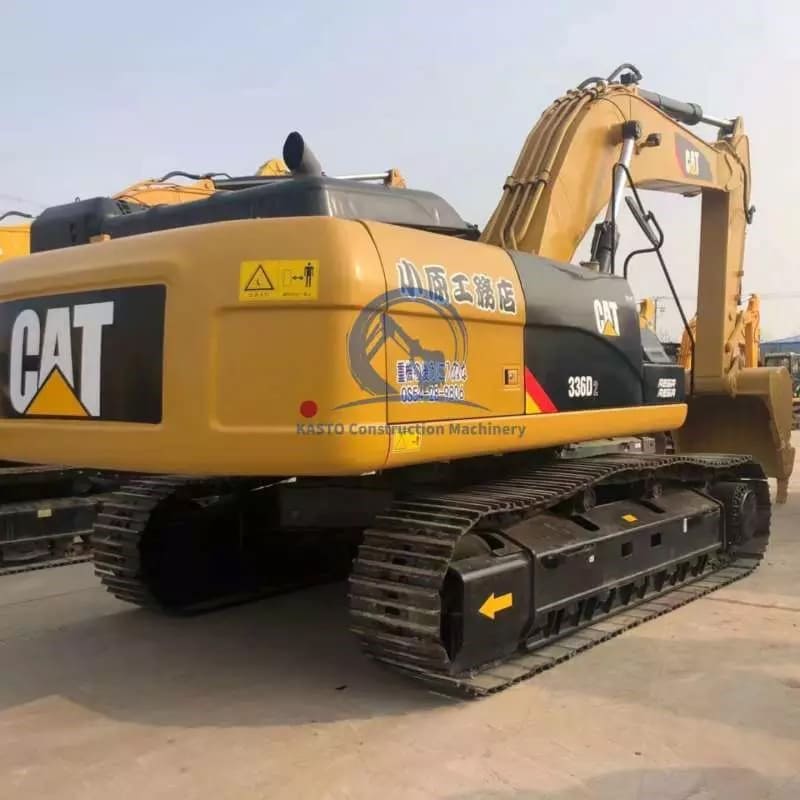Excavators are heavy-duty construction machinery and equipment used for various civil engineering construction operations such as earthworks, excavation, loading, leveling, land reclamation, and building foundation projects. It is mainly driven by a hydraulic system, has strong excavation capabilities and operational stability, and is suitable for engineering operations under various soil and geological conditions.
CAT excavator 320D2 | Large Crawler Excavator
Excavator Size Guide
The size of excavators is usually classified according to their operating weight. Working weight refers to the weight of the excavator itself, including the total weight of the fuselage, engine, hydraulic system, stick, bucket and other components. Different sizes of excavators are suitable for different sizes and types of engineering operations. The following takes the CAT excavator as an example:
1. Compact Excavator – Mini/Medium Size
Compact excavators (Compact Excavators) are a type of small excavators, also known as small excavators or small backhoe loaders. They are usually compact and flexible and suitable for operations in limited spaces. This type of excavator is mainly used in small-scale engineering projects such as urban construction, urban reconstruction, highway maintenance, landscaping, and pipeline construction. The size of compact excavators usually ranges from 1 to 10 tons, and the specific classification can be further divided according to different working weights:
Micro Excavators:
Working weight: less than 1 ton.
Features: Extremely compact, suitable for very small spaces, such as indoor construction, small gardens, underground pipes, etc.
Mini Excavators:
Working weight: between 1 ton and 6 tons.
Features: Small and flexible, suitable for urban construction, small foundation projects, indoor operations, etc.
Compact Mini Excavators:
Working weight: between 6 tons and 10 tons.
Features: It has good excavation ability and maneuverability, and is suitable for small and medium-sized civil engineering, landscaping, road construction and other projects.
Compact excavators usually have replaceable attachments, such as buckets, drill bits, tamping hammers, etc., to adapt to different operating needs. Due to their small size and flexibility, compact excavators are widely used in urban environments and construction operations within limited spaces.
2. General-purpose excavator- Medium
General-purpose medium-sized excavators are a type of excavator with a working weight between 6 tons and 20 tons. They are usually used in various construction projects such as medium-sized civil engineering, road construction, building foundation engineering, river regulation, and mining. This kind of excavator has good excavation capacity and operating stability, and is suitable for various types of soil and geological conditions.
General-purpose medium-sized excavators are widely used in various engineering projects due to their moderate size and versatility.
3. General-purpose excavator – Large
General-purpose large excavators usually refer to excavators with a working weight of more than 20 tons. This type of excavator has strong excavation capabilities, operational stability and adaptability, and is suitable for heavy construction projects such as large-scale civil engineering, mining, river regulation, and port construction.
Excavators can be divided into different size categories according to their working weight, including mini excavators (less than 1 ton), mini excavators (1 to 6 tons), small excavators (6 to 10 tons), general medium excavators Machines (6 tons to 20 tons) and general large excavators (more than 20 tons). Excavators of different sizes are suitable for different scales and types of engineering operations, including civil engineering, road construction, building foundation engineering, mining, water conservancy projects, port construction and other fields. The selection of excavators should be considered based on factors such as the needs of the specific project, construction environment, and budget to ensure the efficient completion of construction tasks.
Post time: Oct-19-2023



